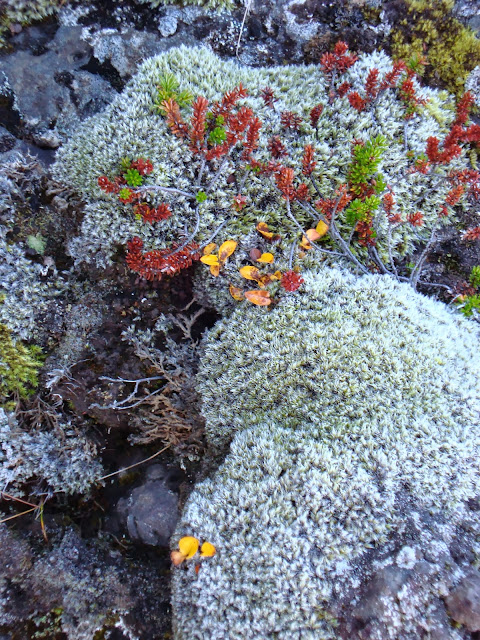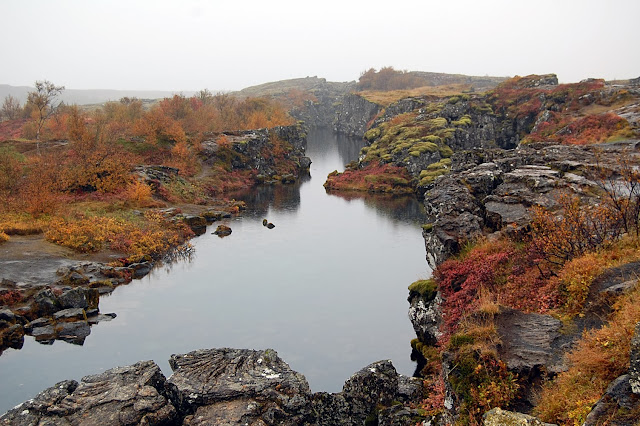Compared to countries in the temperate zone Iceland has few forests and hardly any big trees. Instead, Iceland has lots of moss and smaller plants clinging to life in this northern volcanic land. I'm no botanist, but I found the unfamiliar mossy landscapes intriguing. The next three pictures were taken by C on an old lava field.
More moss softens volcanic terrain seen during C's hike through a rocky-bottomed valley in the Thorsmork Nature Reserve:
Aside from moss, other plants cling tenaciously to the otherwise barren volcanic land, like this grass growing in black volcanic soil near the coastline.
Or this small cluster of star-like sprouts growing in cracks between volcanic rocks.
Or this little green oasis sitting in a wet, sheltered spot among coastal rocks.
Autumn yellow and red were displayed within many fissures in Thingvellir National Park on a dim, rainy day.
Some grass and small berry-bearing plants were present in this sunny scene at Gluggafoss.
There are trees in Iceland, now carefully tended and preserved, even some evergreens seen in the background in Skogar.
There are lovely birch trees, though often stunted and small as in these pictures, also from Skogar.
On our last full day in Iceland we hiked in the Thorsmork Nature Reserve in a valley protected from harsh weather. Although this area is close to volcanoes and glaciers, it harbors a relatively rich collection of vegetation.
Much of Iceland is barren, nearly lifeless volcanic terrain, but there are also many rich pastures with lush grass for grazing sheep and horses.
Stay tuned for more Iceland pictures in my next post.





















No comments:
Post a Comment